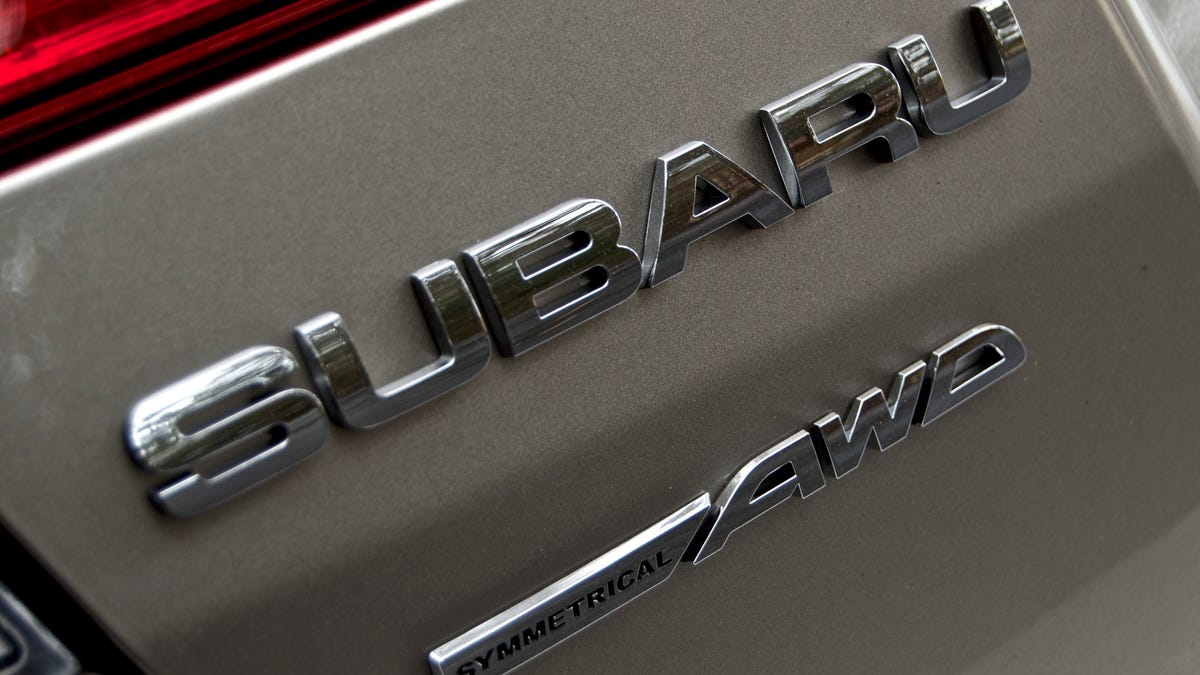Not every Subaru all-wheel-drive system is created equal
Though they all carry the same badge and moniker, there are actually quite a few different versions of Subaru's AWD system in use today.

Yes, almost every Subaru model that you can buy today comes equipped standard with the automaker's Symmetrical All-Wheel Drive system (only the rear-driven BRZ does not). However, you may not know that not all Symmetrical AWD systems are created equal. Despite sharing the same name, there are at least four different all-wheel-drive systems in use today.
The standard viscous coupling
First up is the system that most people tend to think of when the subject of Symmetrical AWD comes up. Found in most of Subaru's vehicles equipped with a manual transmission, the system that we'll call "standard" for simplicity's sake is the most symmetrical of the configurations defaulting to a 50:50 torque split under normal, no-slip driving conditions.
When slip on the front or rear axle is detected, a locking center differential is able to send up to 80 percent of available torque to the axle that has the best traction. The center differential uses a viscous coupling that operates without the aid of computer control and reacts to the mechanical differences in grip.
This type of coupling has been around for ages and its appearance on the 2015 Subaru WRX means that it probably isn't going anywhere soon. This simple, robust system is the workhorse of Subie's AWD reputation.
VTD for automatic transmissions
Recently, the automaker has made a move to switch from standard torque-converter automatic transmissions to continuously variable transmissions (CVT) for most of its vehicles, but there are a few holdouts.
The six-cylinder Legacy, Outback, and Tribeca bearing the 3.6R designation are still rocking a version of Symmetrical AWD that uses Variable Torque Distribution (VTD) and pairs uniquely with their older five-speed auto gearbox. In this case, the nominal torque split is a rear-biased 45:55 default, ditching the viscous center diff in favor of a hydraulic multiplate clutch in combination with a planetary-type center differential.
When slip is detected, based on input from sensors measuring wheel slippage, throttle position, and braking force, the electronically controlled clutch can lock down at 50:50 front-to-rear split where maximum grip is required.
Where the purely mechanical viscous differential is simpler and possibly more flexible, VTD's electronically controlled system has the advantage of being proactive rather than reactive -- shifting torque between the axles more quickly than the mechanical system can.
CVT models
The newer CVT-equipped Subies make use of yet a third Symmetrical AWD system. The hardware is similar to the VTD system described above -- both use electronically controlled multiplate clutches to control torque split -- but the CVT-equipped system defaults to a front-biased 60:40 nominal torque split.
You can find this system on the XV Crosstrek models, the brand-new 2015 Impreza WRX, and older models like the 2014 Legacy.
DCCD
There are plenty more classic variations on the Subaru Symmetrical All-Wheel Drive system that are no longer in use, but the last one that we'll be discussing today is the system in place on the WRX STI.
This system makes use of two center differentials. One is electronically controlled and grants the Subaru's computer fine control over the front-to-rear torque split. The other is a mechanical unit that is capable of reacting more quickly to stimuli than its electronic counterpart. Drivers benefit, ideally, from the best of both the electronically proactive and mechanically reactive worlds here.
Generally speaking, these differentials work out their differences naturally -- harmoniously joined via a planetary gear -- but the driver can bias the system toward either of the center differentials via the electronic Driver Controlled Center Differential (DCCD) controls. I've gone into detail about this system's three automatic and six manual settings when evaluating the 2015 Subaru WRX STI, so check out the details there.
Nominal torque split for the DCCD system sits at a rear-biased 41:59.
Side-to-side?
That pretty much covers, at a glance, how modern Subarus split torque from front to back, but what about the side-to-side or left-to-right torque split? On both the front and rear axle, you'll generally find a standard open-type differential, but performance models (such as the WRX and the Legacy-based 3.6R models) will often feature a limited-slip differential on the rear axle to help with rear-end grip when cornering.
The WRX STI also features a limited-slip differential on its front axle for maximum all-around grip, and the newest 2015 WRX and WRX STI also make use of a brake-based torque vectoring system that bias-brakes the inside wheel when cornering to improve power transfer to the outside of the turn and tighten the turning radius.

